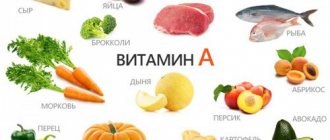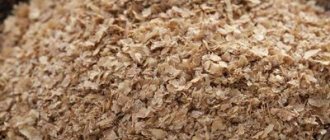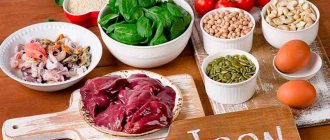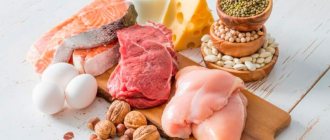Vitamin C, or as it is also called, ascorbic acid, is known firsthand for its beneficial properties. The substance strengthens the immune system and fights colds. Acts as an antioxidant and is necessary not only for health, but also for beauty.
Ascorbic acid, along with group B, is necessary for hair and skin. Therefore, many are interested in what foods contain C. Today we will find out which vegetables and fruits with vitamin C will help replenish nutrient reserves. We will also find out where the vital element is found in large quantities, in addition to fruit crops.
Why do we need vitamin C
Vitamin C performs many important tasks in the human body. In addition to the fact that it has long been used in the treatment of respiratory diseases in complex therapy (since the substance increases the body’s protective function), other healing properties of the element have been found:
- Helps accelerate the process of collagen protein synthesis. The latter is involved in strengthening such components of the body as muscles, bones, blood vessels, cartilage, skin, and other tissues of the body.
- In complex treatment, it helps to speed up the process of restoration of damaged skin tissue (with a wound, cut, burn, etc.).
- Vitamin C is an anti-stress substance. If the body experiences emotional depression or stress of another etiology, the amount of vitamin in the body decreases. This also applies to smoking, frequent drinking of alcoholic beverages, and obesity.
- Provides protection against penetration and activity of harmful microorganisms in the body. This can be explained by stimulation of the formation of immune cells, antibodies and interferon. Numerous studies have proven that eating food containing ascorbic acid during the development of acute respiratory viral infections or acute respiratory infections reduces the duration of the disease by 23-25%. In addition, the risk of complications, especially from the lungs, is reduced.
- In the complex treatment of pathologies such as influenza, pneumonia, diphtheria, ascorbic acid helps improve well-being, appetite, normalizes work and rest, excluding nighttime insomnia, and reduces symptoms of intoxication.
- Vitamin C prevents the oxidation of “good” cholesterol, reduces the amount of “bad” cholesterol, and reduces the risk of developing atherosclerosis. Relevant studies have proven that with a sufficient level of the element in the body, the risk of stroke is reduced by almost half.
- Provides protection for internal organs and systems, the skin from harmful external influences (from negative environmental factors). In addition, the detoxification function of the liver is enhanced, toxic substances, heavy metals, radionuclides, and nitrates are removed from the body faster.
- Under the influence of vitamin C, oxygen delivery to cells improves, while protection against the negative effects of free radicals occurs.
- Participates in the synthesis of the neurotransmitter - norepinephrine, as well as hormones that improve mood and prevent conditions caused by stress (decreased emotional mood, depression, etc.).
- Provides restoration of the structure of the internal vascular walls, which is especially important for people suffering from pathologies such as coronary artery disease, hypertension, and diabetes mellitus. This also applies to people who abuse smoking.
- Participates in protecting DNA from the harmful effects of free radicals, blocking the formation of harmful nitrosaines from nitrates, and reducing the risk of the formation of malignant tumors.
- Slows down the aging of the eye lens, reduces the risk of developing age-related cataracts.
This is not an exhaustive list of beneficial effects that are caused by taking the substance.
Foods containing large amounts of vitamin C
Rose hips, red and black currants
Brew rose hips in a thermos with water at 50-60 degrees and leave for several hours.
It turns out to be a tasty and very healthy drink. Rosehip is the fruit of a wild rose, which is most often used to make jam, jellies, syrups, herbal teas, wine, marmalade and even soup. It is the richest source of vitamin C - a 100 gram serving contains 426 mg.
How to include it in your diet?
You can make rosehip tea, soup, jam and crackers. Or you can add it to ice cream or cakes.
red and black currants, along with rose hips, are leaders in vitamin C content
Black and red currants contain a large amount of vitamin C. Black currants contain 200 mg/100 grams, and red currants contain 250 mg/100 grams.
Green chili
They did not expect! Green chilies are considered one of the best sources of vitamin C. They contain more vitamin than limes, oranges and lemons. 100 grams of chili contain 242 mg of vitamin, and one chili contains as much as 109 mg. This is great news for those who love this vegetable.
How to include it in your diet?
You can add crushed green chilies to your salad to give it a little kick. You can add it to stews, curries or marinate, or dry it and use it as a seasoning. Remember, if you cannot tolerate the heat of peppers or suffer from irritable bowel syndrome, stomach ulcers, or have recently had intestinal surgery, avoid hot herbs or spices, including green chilies.
Guava
Ripe and aromatic guava is one of the richest sources of vitamin C among fruits. 100 grams of guava contain 228.3 mg of vitamin C, and one guava contains about 126 mg. If you eat one fruit every day, then you will not need to worry about your daily dose of this vitamin. Here's how you can use this fruit in your diet.
How to include it in your diet?
Naturally, like any other fruit, guava can be eaten raw. You can also make a salad from slices of guava, cucumber, beets, carrots and apples. You can also make freshly squeezed juice with a pinch of Himalayan salt and a few drops of lemon juice. O delicious guava jelly can be spread on bread.
Yellow bell pepper
Yellow bell peppers are considered the richest source of vitamin C among vegetables - 183 mg per 100 grams of pepper, and one large yellow pepper contains 341 mg of vitamin C. You need to eat peppers to strengthen your immune system and add color to your dishes. Here's what you can cook with sweet yellow peppers.
How to include it in your diet?
Add paprika slices to salads, pizza, and sandwiches. You can add frozen crushed peppers when preparing pasta or Asian and Mexican dishes. You can also stuff the peppers with chopped mushrooms or any other vegetable of your choice and bake in the oven to get a tasty and healthy dish.
Parsley
This unpretentious herb contains the highest amount of vitamin C: 133 mg per 100 grams. 1 tbsp. parsley contains 5 mg of vitamin C. It adds taste and aroma to dishes, and also strengthens the immune system. So, from today, start using parsley in your regular dishes. Here are a few options on how you can do this.
Where to add?
Add chopped parsley to savory pies or pizza. Sprinkle it on your salad or add it to your morning veggie smoothie. Garnish a vegetable or meat stew with these green leaves or add it to a marinade to add a fresh flavor to meat or fish.
Red bell pepper
This bright red vegetable is rich in vitamin C. Did you know that a 100-gram serving of red pepper contains 128 mg of vitamin C, and 1 medium-sized pepper contains as much as 152 grams? Red pepper tastes very pleasant, and any dish decorated with it will look visually beautiful.
Where can I add it?
Pepper slices can be added to salads, Asian and Mexican dishes, or to decorate a sandwich. It goes well with chicken and fish stews. Add it to your morning vegetable smoothie for an extra boost of vitamin C.
Kale
Kale is considered one of the healthiest leaf vegetables. It contains 120 mg of vitamin C per 100 grams, and a bowl of shredded kale contains 80.4 mg. This is even more than the same serving of spinach, which contains only 8.4 mg.
What can you cook from it?
You can add kale leaves to your morning smoothie, salad or stew. You can wrap mushrooms or shrimp with vegetables in leaves. Instead of salad, you can add cabbage leaves to sandwiches or pizza to make the food even healthier.
Kiwi
Kiwi or Chinese gooseberry is a delicious tropical fruit with a lot of vitamin C - 100 grams of kiwi contains 92.2 mg, and one medium sized kiwi contains 70.5 mg. The taste of kiwi is sweetish and sour, and the texture is soft and tender. Kiwi also contains vitamin A, fiber, calcium, magnesium and potassium.
How to include it in your diet?
Add kiwi to your morning smoothie or juice it. It can be eaten in the morning or snacked in the evening. You can also make a cleansing drink with kiwi, cucumber and mint. If you are losing weight or cleansing your body of toxins, then add kiwi to your fruit salad and eat it for lunch.
Broccoli
Broccoli can be found on almost all healthy food lists. And this list is no exception! That's because 100 grams of this healthy cruciferous vegetable contains 89.2 mg of vitamin C. There are many options for preparing and using broccoli. Here are a few of them.
How to include it in your diet?
You can make a super healthy broccoli smoothie for breakfast in the morning or sauté it with other vegetables. Can be baked with sweet potatoes, fish or chicken, or added to pasta.
Brussels sprouts
This little green vegetable is rich not only in fiber and protein, but also in vitamin C. 100 grams of Brussels sprouts contains 85 mg of this vitamin, and one cup contains 74.8 mg. It also contains vitamin A, K, folic acid, potassium, calcium and magnesium.
What can you cook?
You can make Brussels sprouts casserole. Boil or bake or add avocado and bacon to your breakfast. You can add it to homemade soup or pizza.
Carnation
Cloves are used mainly as a spice in the cuisines of India, Pakistan, Bangladesh, Sri Lanka, Tanzania, and Malagasy. It adds flavor and breathes life into a dish. Cloves have anti-inflammatory, antiviral and antiseptic effects and are good for wisdom teeth pain. It also contains vitamin C - 100 grams of cloves contain 80.8 mg of this vitamin, and 1 tsp. clove powder – 1.6 mg. Don't know how you can use it in cooking? Here are some options.
How to include it in your diet?
Spice up your curry with cloves or add flavor to rice dishes. You can simply chew cloves as a natural mouth freshener. Or add half a teaspoon of clove powder to your morning smoothie or juice.
White pigweed
Quinoa, also known as pigweed or simply pigweed, can grow anywhere in the wild or even in a flower pot in the garden. This super healthy leafy vegetable can be purchased from the market or your local supermarket. Here's how you can use it.
How to introduce it into your diet?
Fry an egg with quinoa for breakfast. Add it to your smoothie in the morning or juice in the evening, and make a delicious salad with apples, beets, quinoa, tomatoes and olive oil. You can fry it with vegetables or add it to boiled chicken breast.
Lychee
One of the richest sources of vitamin C among fruits. Sweet and juicy lychee is not only tasty, but also a super healthy fruit. 1 lychee contains 6.8 mg of vitamin C, and 100 grams of this fruit contains 71.5 mg. They also contain potassium and healthy fats.
How to include lychees in your diet?
You can simply eat it raw or squeeze the juice. You can add it to your fruit smoothie or cleansing drink, finely chopped first, also to a fruit salad or even to a pie.
Young mustard leaves
Young mustard leaves contain a significant amount of vitamin C. 100 grams of these leaves contain 70 mg of ascorbic acid, and one glass of crushed mustard leaves contains 39.2 mg. They are also high in fiber, vitamin A and K, calcium, magnesium, potassium and have no cholesterol at all. Mustard leaves have been proven to improve overall health. Here are some ideas on how to introduce them into your diet.
Where can I add it?
You can fry the leaves and add them to vegetable or chicken broth, chickpea salad, cheese sauce or pasta.
Kohlrabi
Kohlrabi or German turnip is a vegetable that can be eaten either raw or cooked. Kohlrabi tastes similar to broccoli and Brussels sprouts and is high in fiber and vitamin C. One bowl of kohlrabi contains 83.7 mg of vitamin C, and 100 grams contains 62 mg. It contains a lot of vitamin A, phosphorus and calcium.
How to include it in your diet?
You can add kohlrabi to salads, soups, stews, bakes, pancakes or chips.
Papaya
Papaya is also a good source of vitamin C - 100 grams of fruit contains 61.8 mg of ascorbic acid, and one small fruit contains 93.9 mg. It is high in vitamin A, folic acid, fiber, calcium, potassium and omega-3 fatty acids.
How to include it in your diet?
You can make Thai papaya salad or sweet chutney. Fresh fruit can be added to chicken or vegetable stews or prepared as a sweet and sour seasoning.
Strawberry
Strawberries don't need any introduction. Everyone likes her. Another reason why strawberries should be part of any person's diet is that 100 grams of this berry contains 58.8 mg of ascorbic acid. 1 large berry contains 10.6 mg of vitamin C. It also contains protein and fiber.
How to use in your diet?
The berry can be eaten raw, added to cereal for breakfast, made into smoothies, jam or jelly, dipped in chocolate, or decorated with a pie or cupcake.
Oranges
Oranges are a very popular fruit with a lot of vitamin C - 100 grams of oranges contain 53.2 mg of ascorbic acid, and 1 large orange has as much as 97.9 mg.
How to include it in your diet?
You can eat the fruit plain or squeeze the juice. You can also add juice to pies or make jam, jelly, syrup, etc. Make a fruit salad with orange to enjoy the citrus flavor of this vibrant fruit.
Lemon and lime
Lemons and limes are citrus fruits, so they contain large amounts of ascorbic acid - 100 grams of lemon and lime contain 53 and 29.1 mg of vitamin C, respectively. They are low in calories and have no cholesterol.
How to include it in your diet?
Mix the juice of 1/4 lemon or half a lime with two glasses of water and drink in the morning to detoxify. Add lemon or lime juice to your morning vegetable or fruit smoothie. Make salad dressing or lemonade, or add lemon zest to a pie, cupcake or cookie.
Clementine
Clementine is a hybrid of an orange and a tangerine. It is juicy and fleshy and rich in vitamin C - 100 grams of fruit contain 48.8 mg of ascorbic acid, and one clementine fruit contains 19.5 mg. It also contains vitamin A, calcium, potassium, phosphorus and fiber.
What can you cook from it?
Clementines can be eaten plain or squeezed into juice, which can be added to your morning vegetable smoothie, pie, muffin, stew, brownies or chocolate fondue. You can make a fruit salad with clementine.
A pineapple
Pineapple is a tropical fruit that is bright yellow in color and has a sweet taste. One cup of pineapples contains 78.9 mg of vitamin C, and 100 grams of the fruit contains 47.8 mg of this vitamin. In addition, it contains vitamin A, calcium, potassium and fiber.
What can you make from pineapples?
Dice the pineapple, drizzle it with lime juice and sprinkle with a pinch of Himalayan salt for a citrusy pineapple salad. You can add pineapple juice to stews or meat marinades. For a Hawaiian-style pizza, add pineapple slices to your favorite ingredients.
Cauliflower
Cauliflower is a cruciferous vegetable, containing 46.4 mg of vitamin C per 100 grams. It also contains protein, calcium, vitamin K, potassium and phosphorus. Here's what you can cook with cauliflower.
How to include it in your diet?
Cauliflower can be fried, baked or grilled. It can be added to vegetable or fish stews or made into casseroles.
Chinese cabbage
Chinese cabbage or pak choy is a leafy vegetable that tastes similar to lettuce and looks like cabbage. 100 grams of Chinese cabbage contains 45 mg of vitamin C, and one bowl contains 31.5 mg and only 9 calories. It is considered an excellent source of protein, vitamin A, K, calcium, phosphorus and potassium. If you don't know how to use it in your diet, read below.
How to include it in your diet?
Chinese cabbage can be used to make salad, borscht or sandwiches. You can wrap any filling you like in cabbage leaves or marinate it.
Watercress
Watercress is a nutritious aquatic plant that is considered the very first leaf vegetable. It is very healthy and rich in vitamin C. 100 grams of the plant contains 43 mg of ascorbic acid, and one bowl of finely chopped vegetable leaves contains 14.6 mg. It is also high in vitamin A, K, calcium and potassium and has no cholesterol. Here's how you can use it in cooking.
How to include it in your diet?
You can prepare a vegetable cocktail, soup, gravy, or throw a few sprigs into a salad, or use watercress as a side dish.
Cantaloupe
Cantaloupe is full of vitamins, minerals and fiber. It has an anti-inflammatory effect and saturates cells with fluid. 100 grams of this fruit contain 36.7 mg of vitamin C, and 30 grams contain 10.3 mg of ascorbic acid. It also contains vitamin A and potassium. Here's what you can make from this fruit.
How to include it in your diet?
You can eat cantaloupe raw, just peel the skin first. Grind in a blender and eat for breakfast. You can prepare a fruit salad, add a little lime juice and a pinch of black pepper and salt.
Cabbage
Cabbage is rich in various beneficial elements, including ascorbic acid. 100 grams of cabbage contain 36.6 mg of vitamin C, that is, half the permissible waste dose. Cabbage helps fight cancer and cardiovascular diseases. Red cabbage also contains a lot of useful substances. 100 grams of this cabbage contain 57 mg of vitamin C, as well as vitamin A, fiber and only 31 calories.
What can you cook?
Cabbage can be used to make salad, soup and stew. You can make cabbage curry or stew rice with cabbage.
Kale
Kale is somewhat similar to spinach and contains a large amount of various beneficial substances, including vitamin C. 30 grams of kale contain 9.9 mg of ascorbic acid, and 100 grams - 35.5 mg. Cabbage leaves contain vitamin A, K, fiber, calcium and potassium.
What can you cook?
Pour boiling water over the leaves and add to your salad, or cook mushroom or chicken soup or stew. You can wrap any filling you like in cabbage leaves. Collard greens can also be cooked with white beans, shrimp and tofu, or added to pasta.
Grapefruit
Everyone knows that grapefruits help you lose weight. Did you know that this fruit also helps strengthen the immune system? This is because 100 grams of grapefruit contains 31.2 mg of vitamin C, and half of the fruit contains 38.4 mg. They also contain vitamin A, calcium, potassium, phosphorus and fiber.
What can you cook with grapefruit?
Eat half a fruit for breakfast. Drink freshly squeezed juice, or add it to stews or marinate meat. You can make a grapefruit salad or add a few pieces to tuna or baked chicken salad.
Swiss chard
Swiss chard has red stems and dark green leaves. They contain a lot of nutrients, so it should be in your diet. One leaf contains 14.4 mg, and 100 grams - 30 mg of vitamin C. Swiss chard contains vitamin A, K, calcium, magnesium, potassium, fiber and not a gram of cholesterol.
How to include it in your diet?
Pour boiling water over the leaves or fry them in a little oil and add to the salad. Swiss chard can be added chopped into a stew or soup, made into a cheese sandwich, or added to a vegetable pie, or wrapped in shrimp.
Spinach
According to one fairy tale character, spinach will make anyone stronger, and it’s true. It contains protein, vitamin A, fiber, calcium, potassium and magnesium, as well as ascorbic acid. 100 grams of spinach contains 28.1 mg of vitamin C, and one bunch contains 95.5 mg.
How to include it in your diet?
Spinach can be blanched and sauteed and added to dishes with other vegetables, mushrooms, chicken, fish, eggs and tofu. You can make a smoothie with spinach or add it to chicken soup to make the broth even healthier. Spinach can be added to vegetable pies and omelettes.
Gooseberry
Gooseberry bushes grow mainly in India, Bangladesh, Sri Lanka, Africa and European countries. Gooseberries are light green in color and have a sour taste. In Ayurveda, gooseberries are considered very beneficial. And most of the health benefits of gooseberries are due to the presence of vitamin C. 100 grams of gooseberries contain 27.7 mg of vitamin C. They also contain vitamin A, potassium, omega-3 fatty acids and fiber.
How to include it in your diet?
You can eat the berries raw and add them to your morning smoothie. You can dry them in the sun and eat them along with other dried fruits every day; gooseberry juice is also useful. You can also pickle gooseberries or make jam.
Mango
Mango is very tasty, but not everyone can treat themselves to this fruit, as it contains a lot of calories. But don’t forget that it contains a lot of fiber, minerals and, of course, vitamin C. One mango contains 57.3 mg of vitamin C, and 100 grams of fruit – 27.2 mg. That is why it is recommended to eat mango every other day to get all the benefits of this fruit.
What can you cook?
Eat the fruit raw or drink freshly squeezed mango juice, smoothie or shake. Add mango slices or cubes to your ice cream or yogurt. Garnish your pie with mango slices or make a fruit salad.
Raspberries and blackberries
Raspberries and blackberries are rich in a variety of nutrients: folic acid, fiber and vitamin C. 100 grams of raspberries contain 26.2 mg of ascorbic acid, and 100 grams of blackberries contain 21 mg. They improve memory, protect the body from cancer and cardiovascular diseases. These berries are a great snack option. They are delicious and will be a worthy decoration for any dessert. The antioxidants in berries help reduce cholesterol and oxidative stress.
What can you cook?
Eat the berries plain or add them to your yogurt or ice cream. Add them to pies, morning smoothies or make jam.
Potato
Potatoes are easy to store and cook and are inexpensive. In addition to vitamin C, potatoes contain carotenoids, flavonoids and fiber. About 19.7 mg of vitamin C is contained in 100 grams of raw potatoes.
What can you cook?
Potatoes can be baked or boiled, preferably with their skins on, to get more vitamin C.
Peas
Fresh green peas are a good source of plant protein, with 100 grams containing 14.2 mg of vitamin C. An excellent source of iron and other nutrients, peas reduce the risk of cancer, depression, cholesterol and macular degeneration.
How to include it in your diet?
Peas can be added to stews, mashed potatoes, curries, soup, salad and quinoa.
Tomatoes
Bright red tomatoes are also a source of vitamin C. Sun-dried tomatoes contain even more ascorbic acid. 100 grams of tomatoes contain 12.7 mg of vitamin C, and 100 grams of dried tomatoes contain 39.2 mg.
How to include it in your diet?
Tomatoes can be added to sandwiches, salads, and curries. You can drink tomato juice in the morning or after a workout to improve your skin condition and lose weight.
Turnip
This root vegetable, oddly enough, is also rich in vitamin C and essential amino acids. Turnips contain calcium, phosphorus and potassium, and 100 grams of the vegetable contains 11.6 mg of vitamin C. It contains complex carbohydrates and fiber, which makes it even healthier.
What can you cook?
It can be added to stews, salads, soups, pastas and casseroles.
Apricots
Apricots improve the appearance of your skin because they contain fiber, vitamin A, potassium, protein and vitamin C, which promotes collagen production. Moreover, 100 grams of apricots contain 10 mg of ascorbic acid and only 48 calories.
How to include it in your diet?
Fruits can be eaten plain or dried. Add chopped apricots to juices, smoothies, salads and desserts.
Cherry
This sweet and sour fruit is very juicy and tasty. 100 grams of cherries contain 7 mg of vitamin C. They also contain vitamin A, folic acid, calcium, protein and potassium.
How to include it in your diet?
Cherries can be eaten fresh or dipped in caramel. You can add chopped cherries to fruit salad or decorate your cake with them. Dried cherries can be added to homemade baked goods or smoothies.
So now you know which foods contain vitamin C. They should definitely be in your diet. Now let me explain the best way to cook and eat them.
You can see a more complete list of products containing vitamin C here.
Daily norm
People from different categories need different amounts of vitamin intake, which can be placed in the table:
| Category of people | Age | Daily value in mg |
| Children | Up to 6 months | 40 |
| From 7-12 months | 50 | |
| From 1-3 years | 40 | |
| From 4-8 years | 45 | |
| From 9-13 years old | 50 | |
| Teen girls | From 14-18 years old | 65 |
| Teenagers boys | From 14-18 years old | 75 |
| Men | From 19 years old | 90 |
| Women | From 19 years old | 75 |
| Elderly | From 50 years old | 100 |
| Athletes | 200-300 | |
| Pregnant | 200-400 |
Cauliflower
The name “cauliflower” for cabbage originated two thousand and a half years ago. Then in the Mediterranean, people developed this variety of vegetable, noting that the head of cabbage consists of small inflorescences.
The nutritional value
One hundred grams of the specified variety of vegetables contains 25 kcal. The main substances contained in it are:
- carbohydrates – 4.97 g;
- proteins – 1.91 g;
- fats – 0.28 g.
Other elements contained in cauliflower include dietary fiber, fiber, acids of organic origin, polyunsaturated acids, starch, and pectins.
Compound
Vitamin substances in the composition of the colored variety of vegetables are represented by elements belonging to the following groups:
| Vitamins per 100 grams of product | Content |
| Vitamin A | 3 mcg |
| Vitamin B1 | 0.1 mg |
| Vitamin B2 | 0.1 mg |
| Vitamin B4 | 45.2 mg |
| Vitamin B5 | 0.9 mg |
| Vitamin B6 | 0.16 mg |
| Vitamin B9 | 23 mcg |
| Vitamin C | 70 mg |
| Vitamin E | 0.2 mg |
| Vitamin H | 1.5 mcg |
| Vitamin K | 16 mcg |
| Vitamin PP | 1 mg |
Mineral components are represented by such elements as:
| Minerals per 100 grams of product | Content |
| Potassium | 299 mg |
| Calcium | 22 mg |
| Magnesium | 15 mg |
| Sodium | 30 mg |
| Phosphorus | 44 mg |
| Iron | 0.42 mg |
| Manganese | 0.155 mg |
| Copper | 39 mcg |
| Selenium | 0.6 mcg |
| Fluorine | 1 mcg |
| Zinc | 0.27 mg |
Benefit
The benefits of eating vegetables are:
- strengthening vascular walls;
- purification of genetic material;
- strengthening bone tissue;
- stimulation of hematopoietic processes;
- improvement of metabolic processes;
- activation of the body's defenses.
Harm and contraindications
Despite the benefits that cauliflower brings to the human body, there are situations when its use is contraindicated. These include:
- allergic reactions;
- gout.
In addition, people with heart failure should not use it. The presence of kidney stones is also a signal for a ban on eating colored vegetables. In case of a violation of the metabolism of purine substances in the human body, he is also prohibited from using it.
How does the body get vitamins?
You can immediately understand that the vitamin has not been absorbed by the body. The lack of such an element is expressed in various violations, which will be discussed below. Various factors influence the absorption of an element. Among the most common:
- Having bad habits. It has been scientifically proven that smokers and coffee drinkers have more problems with vitamin absorption than those who do not abuse such habits. If you light a cigarette after eating, the vitamin content of foods decreases by 2 times. In this case, the antioxidants that protect the body are completely destroyed. As for coffee, the drink helps slow down the absorption of not only vitamin C, but also calcium, iron, and magnesium.
- Sedentary or overly active lifestyle. Both are harmful. In the first case, the amount of vitamin D obtained decreases, and in the second, the removal of the substance from the body is accelerated.
- Poor nutrition. The amount of vitamin C in food decreases if it has been sufficiently stewed or overcooked.
- Concomitant therapy with certain medications, especially antibacterial and oral contraceptives.
You can replenish the lack of vitamin in the body from food or ready-made vitamin supplements, which are purchased at the pharmacy. For better absorption of the vitamin, synthetic preparations are taken after meals.
Facts and myths about vitamin C
Vitamin C has many benefits for human health, which were mentioned at the beginning of the article. Many of us use it to fight colds and coughs. But scientists believe a lot more research needs to be done to prove this. Vitamin C strengthens the immune system and reduces the incidence of colds, but there is no direct evidence of this fact either.
Another question is how much vitamin C should you take per day? Below you will find a table with the recommended daily intake of this vitamin.
Shortage and surplus
Insufficient vitamin content in the body can lead to quite dangerous diseases, including anemia and chronic adenoiditis. The following symptoms indicate a deficiency of such an element:
- rapid fatigue, even after mild physical exertion;
- violation of the work and rest schedule;
- frequent colds;
- periodic headache;
- increased irritability;
- paleness of the skin;
- muscle aches;
- increased bleeding.
At the initial stage, vitamin deficiency is difficult to diagnose, since the symptoms of deficiency are similar to other hypovitaminosis, as well as pathologies of internal organs. The main difference between vitamin C deficiency is the increased fragility of blood vessels.
When collagen synthesis decreases, vascular walls weaken, which leads to their damage. Corresponding clinical manifestations are nosebleeds, bleeding gums, and bruising under the skin.
No less dangerous is hypervitaminosis C, which is expressed in the appearance of the following symptoms:
- nausea and vomiting syndrome;
- heartburn;
- inflammatory processes in the esophagus;
- diarrhea;
- red blood cell hemolysis (cell destruction);
- disorders of the pancreas;
- formation of stones in the kidneys;
- manifestations of disturbances in the functioning of the heart and blood vessels.
Doctors do not recommend consuming large amounts of vitamin C for women during pregnancy, people suffering from increased blood clotting, thrombophlebitis, thrombosis, or diabetes.
Vitamin C intake rate
There is no universal answer to the question of how much vitamin C a person needs. When calculating the daily allowance, many factors need to be taken into account:
- climate and season;
- state of ecology;
- bad habits (nicotine addiction, passive smoking, alcohol intake);
- gender and age of the person;
- chronic diseases.
Doctors have calculated that the average adult should consume from 60 to 100 mg of vitamin C daily. If the doctor has prescribed complex treatment for any disease, it is recommended to increase the dosage to 500 mg or more (but not more than 1500 mg per day).
Increasing the amount of vitamin C entering the body is necessary for those who take contraceptives or antibiotics. People who smoke usually suffer from a lack of ascorbic acid. The combustion products of tobacco interfere with its absorption, which means that those with nicotine addiction should increase the daily dose of vitamin C intake by 20-35 percent.
Fans of kebabs, fried pork, beef stewed with vegetables and other meat dishes, including smoked meats, sausages and sausages, should also consume an increased amount of vitamin C. The fact is that an excess of nitrogenous compounds has a negative effect on the human body. In addition, when making sausages, manufacturers use saltpeter as a preservative, a nitrate compound that, when mixed with gastric juice, can provoke the growth of cancer cells.
Table of contents in food products
Ascorbic acid is found in many foods that are included in the daily diet. For example, some of them can be placed in a table:
| Vitamin Representative | Volume in 100 g (mg) |
| Rose hip | 450-600 |
| Red bell pepper | 180-250 |
| Black currant | 180-200 |
| Green pepper | 130-150 |
| Spinach | 100-120 |
| Kiwi | 70-90 |
| Broccoli | 80-95 |
| Sorrel | 60 |
| Strawberry | 50-60 |
| Orange | 50-60 |
| Gooseberry | 40 |
| Lemon | 40-45 |
| Mandarin | 30-40 |
| Green onion | 25 |
| Potato | 25 |
| Apples | 15-20 |
| Cherry | 15 |
How does vitamin deficiency manifest itself?
Insufficient consumption of foods containing ascorbic acid leads to rapid fatigue, absent-mindedness, and memory impairment. A person becomes lethargic, shortness of breath appears with little physical exertion, and the body’s resistance to various forms of infections weakens. And these are only external manifestations.
Since it is this isomer that is responsible for capillary permeability, its deficiency can result in the development of hemorrhoids and varicose veins. Without vitamin C, the body does not absorb iron and calcium well, and this is fraught with anemia, disruption of the cardiovascular system, and excess weight gain.
Combination of products with each other
Many plant products contain vitamin C, however, if they are combined incorrectly, the beneficial properties of the element are reduced, which also affects the health of the body. For example, zucchini and cabbage contain many plant enzymes that have an antivitamin effect. Their effect on the body causes the destruction of the element.
This element (vitamin C) is involved in the absorption of iron contained in the liver. Iron, which is included in parsley, helps improve the absorption of vitamin from lemon. The same effect occurs with the combined use of sweet peppers and artichokes, strawberries and spinach.
If you combine green tea and lemon, the ascorbic acid in the latter causes an increase in the effect of cahetins in the drink.
Vitamin C in tomatoes goes well with elements such as fiber, fats, proteins, zinc, present in chickpeas (a herbaceous plant of the legume family). A similar effect is observed with the simultaneous consumption of mushrooms, pork, and broccoli.
List of record-breaking foods for vitamin C content
There is little vitamin C in animal products. The main sources are:
- liver (pork, beef, chicken);
- kidneys;
- milk (mare, cow, goat);
- koumiss.
The real record holders for the amount of vitamin C they contain are vegetables and fruits.
It should be remembered that during heat treatment the bulk of the vitamin C necessary for life is lost.
Ascorbic acid is soluble in water. Only in boiled white cabbage is up to 50 percent of the vitamin retained, and only if the vegetable has been in boiling water for no more than an hour.
It is advisable to consume fruits and vegetables raw. Rich in vitamin C:
- lettuce, sorrel and spinach leaves;
- green and onions;
- sweet green peas;
- radish;
- horseradish root;
- hot cayenne and sweet bell peppers;
- tomatoes;
- eggplants.
One hundred grams of dried boletus contains 220 mg of vitamin C, porcini mushrooms – 150 mg, and other mushrooms contain a small amount of ascorbic acid.
Among fruits, the champions are apples, oranges, pomelo and other citrus fruits, persimmons, peaches, melons, apricots, and among berries – currants, grapes, raspberries, strawberries, and blueberries.
It is believed that lemons contain the most vitamin C, but in fact this is not entirely true. Yes, this citrus is a record-breaking product, but to get the daily dose, an adult must consume two whole lemons daily, including the peel. It is unlikely that anyone will be able to eat this sour fruit like an apple.
Vitamin C is better absorbed in combination with citrine, which lemons are especially rich in.
Infusions of rowan fruits, sea buckthorn, rose hips, burdock root, peppermint, raspberry leaves, violet, plantain, pine needles, and fennel seeds will help cope with seasonal vitamin deficiency and chronic lack of vitamin C. Even with long-term storage, the concentration in dried rose hips remains very high. Pharmacy syrup from these berries can easily replace the highest quality multivitamin complex.
Cooking tips and tricks
Ascorbic acid is one of the most unstable vitamins among all useful elements. The negative impact comes not only from high temperatures during cooking, but also from freezing food containing acid.
In order to preserve the beneficial properties of products with ascorbic acid, it is recommended to follow the following rules:
- store food in a place where open sunlight does not penetrate and where it is cool;
- do not use metal utensils during cooking, which contribute to the oxidation of the vitamin, reducing its beneficial properties;
- It is better to cook food by steaming, in a double boiler, or in a frying pan under a lid with the addition of a small amount of water;
- When cooking vegetables containing vitamins, they should be thrown into boiling water, and not brought to a boil in cold water;
- prepared meals with appropriate ingredients are not heated;
- cut, salt, season salad and vegetables immediately before consumption.
By following these simple recommendations, you can preserve the beneficial properties of vitamin C by 30%.
Due to the fact that this element belongs to the group of acids, it is not recommended to eat food containing it on an empty stomach. This is especially true for people with a weak stomach, which can cause irritation of the mucous membranes of the organ. It is better to take such foods together with starch-containing foods, for example, potatoes, bananas.
Main functions
As already mentioned, the content of ascorbic acid in the diet provides a powerful preventive effect and helps strengthen the immune system. But that's not all. Its action is also aimed at solving a number of other problems:
- Normalization of the process of producing hormones and amino acids required by the body. Also, adding vegetables and fruits, which contain a lot of vitamin C, to the diet, it is possible to normalize protein-carbohydrate metabolism (this is especially important for athletes).
- Reducing the risk of a number of problems, including coronary heart disease, circulatory disorders (including the brain), excessive increases in cholesterol levels, hypertension, and so on.
- Tissue restoration and accumulation of glycogen in the liver, a positive effect on the quality and rate of blood clotting.
- Fighting allergies, as well as diseases such as diabetes, gastrointestinal cancer, hepatitis.
- Help with colds. Knowing which fruits contain vitamin C and supplementing your diet with them will make it easier to cope with herpes and ARVI.
- Ascorbic acid is also a reliable assistant for chronic fatigue syndrome, tuberculosis, rheumatism and other problems.
Features of red cabbage
The red-headed “sister” differs in appearance only in shade (it is red-violet). Regular consumption of this type of cabbage in fresh salads or stews ensures that the body receives many basic nutrients:
- Potassium is a mineral that strengthens the heart and restores blood vessels.
- Folic acid, necessary for normal growth and development.
- B vitamins that restore the functioning of the central nervous system and improve skin condition.
Role in the body
The body's needs for ascorbic acid are quite high, since it is involved in various processes and does not accumulate in tissues and organs.
Vitamin C takes on several functions at once.
- Antioxidant: participates in redox processes.
- Vascular elasticity factor: under the influence of vitamin C, collagen protein is formed; when it is deficient, blood vessels become brittle.
- Activator of immune defense: increases the phagocytic activity of leukocytes, and hence the body’s resistance to infections.
- Hepatoprotector: increases the antitoxic potential of the liver, forms a glycogen reserve, promotes the evacuation of mercury and lead.
- Cholesterol metabolism regulator: converts cholesterol into bile acids.
- Regeneration stimulator: promotes tissue healing.
Ascorbic acid also normalizes the blood coagulation system and is necessary for the normal functioning of the nervous and endocrine systems, thyroid and pancreas. In the presence of vitamin C, iron, calcium, proteins are absorbed, and hormones are synthesized. Its presence in the diet serves as a prevention of cancer and atherosclerosis.
Is cabbage harmful?
The product in question can be taken in any form: juice, pickled, fresh, and so on. But there is a category of people whose product is contraindicated. Cabbage will be prohibited if you are treating the following diseases:
- enterocolitis;
- pancreatitis;
- tendency to gas formation;
- increased stomach acidity.
Otherwise, cabbage and the vitamins in it are beneficial for the body. And one moment. Breasts do not grow from eating cabbage, but achieving a wasp waist is quite possible. The main thing is to take a thoughtful approach to planning your diet and don’t forget to exercise.
What you need to know about seaweed?
On store shelves you can increasingly find such an amazing product as seaweed. In fact, we are not talking about a vegetable in the usual sense, but about algae (kelp). This product is rich in:
- proteins;
- fats;
- carbohydrates;
- vitamins PP, K, D, C, B;
- mineral salts;
- fiber.
The peculiarity of the product is the presence of iodine , and to provide the organs and systems of the body with the necessary amount of it, 50-60 grams of kelp per day is enough.
It is worth noting the presence of the following substances:
- phosphorus;
- magnesium;
- sodium;
- gland.
These elements improve the condition of the skin and hair, restore metabolic processes and the functioning of internal organs. Kelp also contains:
- polysaccharides;
- fructose (L-type);
- folic and pantothenic acid.
Vitamin C - where it is found most in foods (table)
| Product name | Amount of mg in 100 grams |
| Dry rosehip | 1200 |
| Fresh rosehip | 470 |
| Red pepper (sweet) | 250 |
| Sea buckthorn | 200 |
| Black currant | 200 |
| Green pepper (sweet) | 150 |
| Parsley | 150 |
| Brussels sprouts | 120 |
| Green dill and wild garlic | 100 |
| Kiwi | 71-92,1 |
| Cauliflower, red rowan | 70 |
| Oranges, strawberries, wild strawberries, | 60 |
| Red cabbage | 60 |
Let's summarize. Among the listed products there are some kind of record holders for vitamin C. Let us once again note in more detail the TOP 3 products :
Rose hip
Perhaps you were surprised that the first place of honor is occupied by rose hips. It is important to note that rose hips should never be brewed with boiling water and infused in a thermos. In this case, the lion's share of vitamins will be lost. To get the maximum amount of vitamin C, you need to fill the rose hips with water at a temperature no higher than 80 degrees, close the container with a lid and leave for several hours.
bell pepper
Second place on our list is given to red bell pepper. It not only contains almost five times the daily requirement of vitamin C. It can also be considered a storehouse of vitamins, because pepper is rich in vitamins P, B1 and B2, and carotene. Sweet red peppers contain sugar alkaloids, essential oils and capsacin, which is an excellent cancer preventative.
Sea buckthorn and currant
Sea buckthorn and black currant are rightfully in third place.
| Product name | Amount of mg in 100 grams |
| Spinach and horseradish | 55 |
| White cabbage, grapefruit | 45-60 |
| Sorrel | 43 |
| Lemons, tangerines | 38-40 |
| Beef liver | 35 |
| Rutabagas, gooseberries | 30 |
| Radish | 29 |
| Green peas, radishes | 25 |
| Celery greens | 23-38 |
| Quince | 23 |
| Pineapple, melon, potato, raspberry | 20 |
| Winter apples | 16 |
| Zucchini | 15 |
Buyers' choice!
Natural vitamin C from Ester-C can be ordered in the iHerb online store. When placing an order, use promo code JPF908 and receive a 5% discount on your first and subsequent purchases.
American Health, Ester-C, 500 mg, 60 capsules
American Health, Ester-C, 500 mg, 60 capsules
iherb.com
551 rub.
READ REVIEWS
American Health, Ester-C with Citrus Bioflavonoids, 1000 mg, 90 Capsules
American Health, Ester-C with Citrus Bioflavonoids, 1000 mg, 90 Capsules
iherb.com
RUB 1,803 RUB 1,442
READ REVIEWS
American Health, Ester-C with Citrus Bioflavonoids, 1000 mg, 180 Vegetarian Tablets
American Health, Ester-C with Citrus Bioflavonoids, 1000 mg, 180 Vegetarian Tablets
iherb.com
RUB 2,748 RUB 2,199
READ REVIEWS











